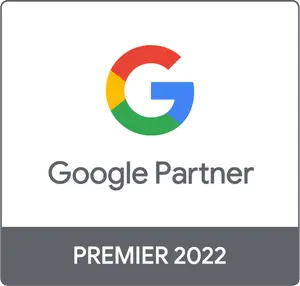It's clear that technology is increasingly present and interconnected in our lives. We may find it difficult to draw a line that separates our real life of our online life because both are merged and coexist in this new reality.
Due to these changes in user behavior patterns, most businesses invest great resources in developing a multi-channel experience (not omnichannel) by activating different channels and providing different messages for each of them. We see how a business's website, blog, Instagram profile, newsletter, PPC advertising, and physical space provide different experiences to attract new customers and forge lasting relationships with them.
Although it is a first step in the digital transformation of any business, there is an even more beneficial concept for companies with a digital presence. Today we will talk about the Omnichannel and how it can benefit your marketing strategy.

What is omnichannel marketing?
This innovative marketing approach refers to the development of a strategy that ensures a single, integrated and cohesive experience regardless of the channel through which the user interacts with the business. This ensures an exceptional experience beyond the nature of the interaction: customers can visit the store in person, purchase through the app on their mobile device, or leave their contact information on a form via their desktop browser. At every step of the customer journey, the experience will be similar and seamless between the physical and digital environments, giving greater brand consistency and enhancing its reputation.
What is the difference with multi-channel marketing?
Multi-channel marketing contemplates the Brand activation across multiple communication channels but does not take into account a unified and integrated experience of the same. In this way, each channel follows its own rules and communication characteristics. An example of multichannel is when you access an e-commerce site and the information you see on your mobile phone is less than when you browse it from your computer (where you may be able to see more product details) or when you visit their Instagram profile (where you may see flash sales). In this case, several channels have been activated, but there is no cohesion between them, and the user doesn't perceive a unified experience.
What are the main advantages of implementing an omnichannel strategy?
-
Your brand, more consistent: Your brand image will be strengthened by offering a comprehensive and cohesive experience across all channels and touchpoints with the user.
-
Increased efficiency in internal processesBy applying a global strategy and not working in silos, the control of each area, purchasing process, and information tracking will be more efficient since all processes will be centralized.
-
More consumer informationTracking the same user and investigating their behavior across each channel provides much more information than analyzing each channel independently. This way, you can include other marketing techniques such as cross-selling or offers at the right time and on the right channel.
-
Increased conversions: By implementing an omnichannel strategy, you can be present throughout the entire purchasing process of your potential customers and organize your communication channels transversally (e-commerce, physical store, social media, mailing, etc.)
Three examples of successful omnichannel marketing
-
Netflix Spain: Considered one of the top three audiovisual content platforms in our country, Netflix stands out for its rapid penetration in our market since its expansion to Spain in 2015. One of the keys to its success is the omnichannel viewing experience it offers to all users who subscribe to the service. Omnichannel is reflected at the product level upon accessing the platform, as the experience will be the same regardless of the device/channel through which the content is consumed (mobile, tablet, computer). Another fundamental key to the streaming company's success is its hyper-personalization of content based on algorithms that record its users' preferences.
-
SephoraWith 2,600 stores in 36 countries and a website that receives nearly 60 million visits per month, Sephora has become a benchmark in cosmetics and beauty. The keys to its success are based on a truly unique shopping experience that merges the physical and digital worlds: its stores feature screens, augmented reality, and staff use iPads to showcase more products. Regarding its omnichannel strategy, Sephora has built its digital experience around its own app, which serves as an information center for its users, where they can find beauty tips, new product updates, and even content from their favorite influencers. This omnichannel approach has been forged from the corporate culture by merging the digital retail department with the physical retail department. By creating a single team, Sephora focuses on overall sales and strategies to increase them without prioritizing its e-commerce channel or its physical stores. This way, it can track user behavior throughout the entire customer journey and encourage purchases at the most critical points.
-
ZARAPresent in almost 3,000 points of sale worldwide and with a website that receives 10 million visits per day, Zara is Inditex's flagship, making a difference in logistics and fashion retail internationally. The success of its strategy has been based on understanding the changes in its customers' purchasing behaviors and adapting its customer journey to these new preferences. A perfectly integrated experience between Zara's e-commerce (for placing the order) and its physical stores (for picking it up in many cases) creates the illusion of a traditional purchase, but enhanced thanks to technology (no more waiting in long lines or not finding your size). It's worth mentioning that Zara doesn't engage in conventional advertising (digital campaigns, banners, giant billboards in major cities, etc.) but instead uses the old technique, like other brands like Apple, of selecting the most iconic locations in cities and working on their window displays.
We conclude by encouraging you to reflect on your business in terms of interconnectivity between multiple channels. Is it provided to the user the same information on all channels Or does the user have to fill in the gaps and search for what they need channel by channel? How can you create a more homogeneous experience between all the channels? How can the channels support each other? How can generate a centralized system that brings together all channels and facilitates internal operations? Answering these questions will be a good starting point for kicking off 2023 with an upgrade to your digital marketing strategy.






